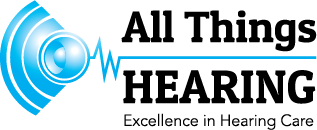Are you looking for a Comprehensive Hearing Test Calamvale
Ready to take the first step towards better hearing?
Let’s talk!
Connect with us today! Fill out the contact form below to schedule your personalised hearing consultation at All Things Hearing. Our expert team is committed to guiding you on your journey to improved hearing health. Don't wait to enhance your quality of life. Reach out now – we're here to listen and help!
Follow us:
A comprehensive hearing test evaluates your hearing through multiple assessments in a sound-treated room. You'll wear headphones while responding to different tones, frequencies, and speech patterns. The audiologist will also check your ear canal, middle ear function, and how well your ears process sounds. Results are displayed on an audiogram showing hearing levels across frequencies. Understanding these detailed findings will help determine your best treatment options.
What to Expect During Your Hearing Assessment
When you arrive for your hearing test, a licensed audiologist will guide you through several evaluations in a sound-treated room. You'll wear headphones and listen to various tones at different volumes and frequencies, indicating when you hear each sound. The audiologist will also test your speech recognition by asking you to repeat words or phrases.
Additional assessments may include tympanometry, which measures your eardrum's movement, and otoscopy, where the audiologist examines your ear canal with a special instrument. You might also undergo bone conduction testing, where a small device is placed behind your ear to evaluate how well sound travels through your skull. The entire process typically takes 30-60 minutes, and your audiologist will review the results with you immediately afterward.
Types of Hearing Tests and Their Purpose
These comprehensive evaluations include several distinct types of hearing tests, each designed to assess different aspects of your auditory system. You'll likely undergo pure-tone testing, where you'll respond to various pitched sounds through headphones, helping determine your hearing threshold levels. Speech recognition tests measure your ability to understand and repeat words at different volumes.
Tympanometry examines your middle ear function by measuring eardrum movement, while acoustic reflex testing checks how well your ear muscles respond to loud sounds. If needed, your audiologist may perform otoacoustic emissions testing to evaluate your inner ear's hair cell function. For children or those who can't participate in traditional tests, behavioral observation audiometry might be used to assess responses to sounds through natural reactions.
Understanding Your Test Results
After your hearing test, you'll receive an audiogram – a visual graph showing your hearing levels across different frequencies. Your results will indicate if your hearing falls within normal range (0 to 25 decibels) or if you have hearing loss, which can be mild, moderate, severe, or profound.
The audiogram displays frequencies from low (125 Hz) to high (8000 Hz) along the horizontal axis and volume levels in decibels on the vertical axis. Each ear's results appear separately, typically with red circles for the right ear and blue X's for the left. If your results show hearing loss, your audiologist will explain which frequencies are affected and recommend appropriate solutions, such as hearing aids, cochlear implants, or other assistive devices.
Signs You Need a Professional Hearing Evaluation
Several key indicators suggest you might need a professional hearing evaluation. If you're frequently asking others to repeat themselves or turning up the TV volume higher than usual, these are common warning signs. You may also notice difficulty following conversations in noisy environments or struggling to hear high-pitched sounds like doorbells and phone notifications.
Other signs include feeling that people are mumbling, having trouble understanding children's voices, or experiencing ringing in your ears. If you're withdrawing from social situations due to communication challenges or finding yourself exhausted from concentrating too hard to hear, it's time to schedule a test. Don't wait if you've experienced sudden hearing loss or persistent ear pain, as these symptoms require immediate professional attention.
Treatment Options and Next Steps
Once your hearing evaluation confirms hearing loss, you'll discover multiple treatment paths available. Your audiologist will recommend solutions based on the type and severity of your hearing loss, which may include hearing aids, cochlear implants, or assistive listening devices.
If you're prescribed hearing aids, you'll need to choose from various styles, from completely-in-canal to behind-the-ear models. Your audiologist will help you select the best option based on your lifestyle, budget, and specific hearing needs. They'll also schedule follow-up appointments to ensure proper fit and function.
For severe hearing loss, cochlear implants might be recommended. These require surgery and rehabilitation, but can dramatically improve your hearing. Regular maintenance, battery changes, and periodic adjustments will help maintain optimal performance of your chosen hearing device.
Disclaimer
The content on our site is purely for education and should not be seen as an endorsement or recommendation of any treatments or products without a thorough hearing assessment and evaluation. Before starting any treatment, users should get advice from a professional and be fully aware of any potential side effects or risks related to the procedures. Any products we mention cannot be purchased by the public without first consulting a hearing health expert.
